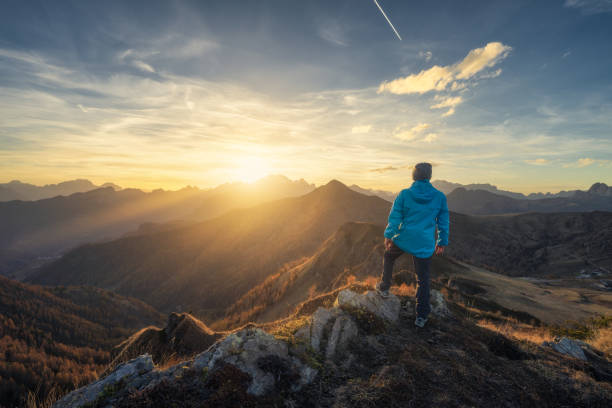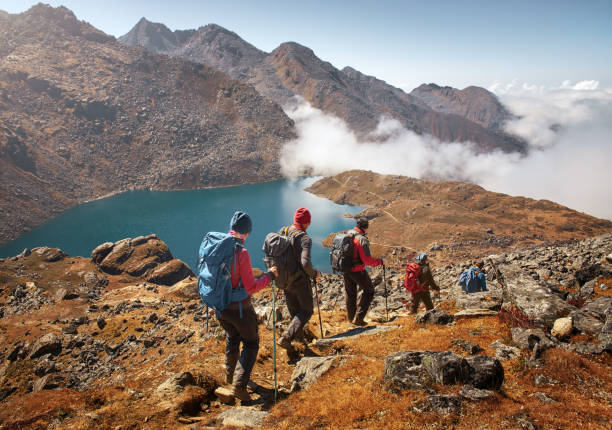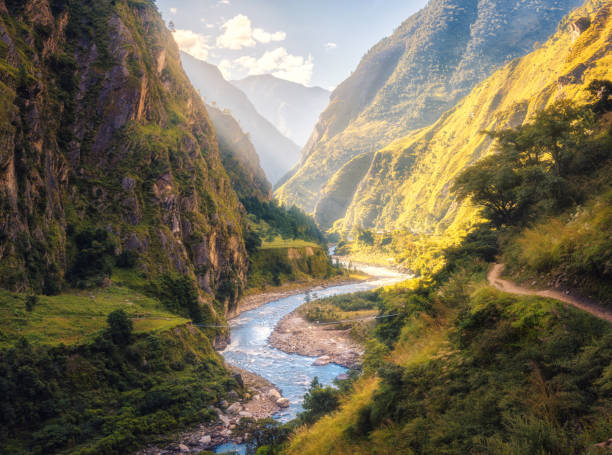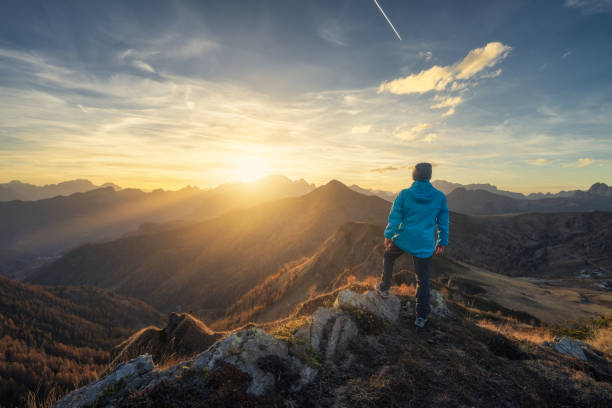How To Describe Mountains In Writing (12 Steps You Need To Know)
Describing mountains in writing is an art as ancient as the peaks themselves, a craft that beckons writers to evoke the grandeur and mystique of these colossal natural wonders. Mountains stand as sentinels of time, their rugged contours and towering summits carrying tales of epochs past.
They are living entities, resonating with the whispers of the wind, the secrets of ancient rocks, and the footprints of countless travelers who have stood in their awe-inspiring presence.
In the pages that follow, we embark on a literary journey, exploring the techniques and nuances of describing mountains with depth and resonance.
From the power of sensory details to the magic of metaphors, from the influence of cultural context to the imprint of human interaction, we shall unravel the rich tapestry of mountain description, enabling writers to harness words as tools to capture the essence of these majestic giants and transport readers to the sublime world they represent.
How To Describe Mountains In Writing
Describing mountains in writing involves creating vivid imagery and conveying the beauty, majesty, and awe-inspiring nature of these natural wonders. Here’s a step-by-step process on how to do it:
Observation
Start by carefully observing the mountains you want to describe. Note their size, shape, and the surrounding landscape. Pay attention to details such as snow-capped peaks, rocky cliffs, or lush forests.
Research
Gather information about the specific mountain range or peak you’re describing. Learn about its geological history, flora, fauna, and any cultural or historical significance it holds.
Imagery and Metaphors
Use descriptive language, metaphors, and similes to paint a vivid picture in the reader’s mind. Compare the mountains to objects or animals to evoke a sense of scale or grandeur. For example, “The towering peaks rose like ancient giants, their rugged faces weathered by time.”
Sensory Details
Appeal to the reader’s senses by describing the sights, sounds, smells, and even tastes associated with the mountains. Mention the crisp mountain air, the scent of pine trees, the sound of rushing streams, or the taste of fresh mountain water.
Emotions and Feelings
Describe the emotional impact of the mountains on both you as the writer and the potential reader. Convey feelings of wonder, awe, serenity, or exhilaration. Make the reader feel like they are experiencing the mountains themselves.
Geographical Features
Discuss notable geographical features such as peaks, valleys, ridges, and glaciers. Explain how these elements contribute to the mountain’s character and charm.
Weather and Seasons
Consider how the mountains change with the seasons and the weather. Describe the play of light and shadow on the slopes, the dramatic effect of a sunrise or sunset, or the stark beauty of a snow-covered landscape.
Human Connection
If relevant, include stories or anecdotes about human interactions with the mountains, whether it’s about climbing adventures, spiritual significance, or cultural traditions associated with the area.
Organization
Organize your description logically, considering the viewpoint and perspective from which you’re describing the mountains. You can start with an overall view and then zoom in on specific details.
Revision and Editing
After writing your description, revise and edit it to ensure clarity, coherence, and conciseness. Remove any redundant or unnecessary details, and refine your language to make it more evocative.
Read Aloud
Read your description aloud to yourself or someone else. This can help you identify awkward phrasing or areas where the description can be improved for better flow and impact.
Feedback
Seek feedback from others to get different perspectives on your description. They may provide insights or suggestions that you hadn’t considered.
Remember that the goal of describing mountains in writing is to transport the reader to this majestic landscape, allowing them to visualize, feel, and connect with the natural beauty and grandeur of the mountainscape.

Setting the Scene
Setting the scene amidst the towering sentinels of stone, you step into a world where time dances to the rhythm of mountains.
As the sun dips below the horizon, its last fiery kiss paints the craggy peaks in hues of orange and gold, casting long shadows that whisper secrets in the gathering twilight.
The air, crisp and bracing, carries the faint scent of pine needles, a fragrant prelude to the serenade of nature that awaits.
In this ethereal moment, the mountains stand as ancient guardians, their very silence a symphony of anticipation, inviting you to embark on an adventure where each step is a brushstroke on the canvas of your own epic tale.
Choose the appropriate location and context for your mountain description
Selecting the perfect location and context for your mountain description is akin to choosing the setting for a masterpiece.
Whether it’s the jagged peaks of the Himalayas piercing the sky, the rolling Appalachians shrouded in mist, or the rugged Rockies crowned with evergreen, each locale offers its own enchanting narrative.
Consider the purpose of your description – is it the backdrop for a heart-pounding adventure, a place of spiritual retreat, or a testament to nature’s grandeur? The context may change the mountains’ character entirely, from foreboding and challenging to serene and awe-inspiring.
The choice of setting is a portal through which your readers will embark on a sensory journey, so make it with care, for it will determine the mood and magic of your mountain narrative.
Consider the time of day and weather conditions to set the mood
The time of day and weather conditions are the brushstrokes that paint the emotional canvas of your mountain description. In the soft blush of dawn, mountains awaken from their slumber, bathed in the gentle glow of morning light, evoking a sense of hope and new beginnings.
As the sun reaches its zenith, the mountains bask in the brilliance of day, their features sharply defined, inviting exploration and adventure.
However, at dusk, when the sky transforms into a tapestry of indigos and purples, the mountains take on an air of mystery, their rugged contours casting long shadows that stir the imagination.
Weather conditions, whether it be the gentle caress of a warm breeze or the furious roar of a storm, add depth and complexity to this narrative, amplifying the mood from serene tranquility to tempestuous drama.
By skillfully weaving these elements together, you can orchestrate a symphony of sensations that will immerse your readers in the very heart and soul of your mountainous world.
Descriptive Language
Descriptive language is the alchemist’s toolkit of the writer, the enchanting spell that transforms mere words into vivid, pulsating worlds.
It’s the artist’s palette of colors, each word a brushstroke that conjures mountains that rise like titans, forests that whisper secrets, and skies that weep or dazzle.
With the precision of a surgeon’s scalpel, it dissects the intricacies of texture, taste, and scent, allowing readers to taste the crispness of an apple, to feel the cool caress of satin, or to breathe the earthy perfume of a rain-soaked forest.
In the hands of a skilled wordsmith, descriptive language becomes a symphony of senses, a portal to realms unexplored, and a journey where the ordinary transforms into the extraordinary, leaving readers breathless and yearning for more.
The power of sensory details
Sensory details possess a profound magic that transcends the mere act of storytelling; they are the soul of immersion. They allow readers to traverse the boundaries of mere words and fully inhabit the world you’ve crafted.
With them, you can make the reader feel the bite of winter’s icy breath on their cheeks, taste the tantalizing sweetness of ripe mangoes, hear the whispering secrets of ancient oak trees, see the world through the eyes of your characters, and even touch the ethereal fabric of their dreams.
Sensory details are the keys to unlocking the doors of imagination, inviting readers to step inside and become an integral part of the narrative, forging a connection so intimate that the line between fiction and reality blurs, and the story lives on long after the last page has been turned.
Personification and Metaphor
Personification and metaphor are the enchanting conjurers of emotions in the realm of words. They infuse life into the inanimate, beckoning mountains to whisper their ageless wisdom and rivers to sing their serenades.
Mountains become ancient sages, their peaks crowned with silvered hair, while rivers dance like carefree spirits.
Metaphors, on the other hand, transform the mundane into the extraordinary, turning everyday moments into profound revelations.
They’re the alchemists of storytelling, turning leaden words into the gold of meaning. Like a masterful illusionist, they draw back the curtains on hidden truths, inviting readers to explore the uncharted territory of emotions and ideas.
Personification and metaphor are the symphony’s crescendo and the artist’s brushstroke, painting the world in vibrant, imaginative hues and leaving an indelible mark on the canvas of the reader’s mind.

Breathing life into the mountains
Breathing life into the mountains is akin to invoking ancient deities from the depths of slumber. It’s the art of making those towering colossi pulse with the heartbeat of the Earth itself.
Mountains become more than geological formations; they turn into sentient beings, guardians of secrets veiled by time. Their craggy visage takes on human-like qualities, with peaks that whisper the tales of ages and valleys that hold the echoes of forgotten voices.
As writers, we imbue these stoic giants with emotions—awe, reverence, and sometimes, a touch of foreboding, making them integral characters in the narrative of our stories.
Breathing life into the mountains is our way of honoring their grandeur, inviting readers to stand in their shadow and feel the primal connection between humanity and the sublime forces of nature.
Employ metaphors to convey emotions or symbolic meaning
Metaphors are the storyteller’s secret code, the keys to unlocking the deeper layers of emotion and meaning within a narrative.
They are the bridges that connect the tangible with the intangible, offering readers a fresh perspective on the familiar. Like a lighthouse cutting through the fog, metaphors pierce through the surface of words to illuminate hidden truths and emotions.
They can transform a mere raindrop into a diamond tear of sorrow, or a sunset into a blazing farewell kiss. Through metaphors, writers can paint emotions and ideas with a palette of vivid imagery, creating a richer, more resonant experience for the reader.
Metaphors breathe life into the abstract, infusing it with tangible vitality, and serve as the unspoken language of the heart in the symphony of storytelling.
Historical and Cultural Context
Historical and cultural context is the timeworn tapestry upon which every story is woven, each thread carrying the weight of centuries.
It’s a labyrinth of forgotten whispers and resounding echoes, where the deeds of ancestors and the tales of forgotten tribes cast long shadows into the present.
Like a seasoned archaeologist, delving into this context unearths treasures of myth, legends, and lost civilizations, enriching the narrative with the vibrant colors of tradition and heritage.
Historical and cultural context transforms the mountains into not just geological wonders but also storied landmarks of human struggle and triumph, where each peak holds the secrets of generations and each valley cradles the hopes and fears of those who once called these lands home.
It is the alchemy that turns the ordinary into the extraordinary, transcending time and space to paint the past on the canvas of the present.

Highlight the significance of the mountains in local culture or history
Mountains are more than geological marvels; they are the sacred tomes of local culture and history, their peaks etched with stories passed down through generations like cherished heirlooms.
These towering giants are the silent witnesses to the trials and triumphs of civilizations, serving as natural citadels of strength and inspiration. In the eyes of indigenous peoples, mountains are often seen as living entities, their spirits guarding the land and guiding the way.
They become the backdrop for ancient rituals, the settings for epic myths, and the compass points of tradition.
By highlighting the significance of mountains in local culture and history, we connect with the very soul of a place, drawing readers into a world where nature and human heritage intertwine in a dance as old as time itself.
Explore any myths, legends, or folklore associated with the mountains
Mountains are like the storytellers of the earth, their towering presence inspiring myths, legends, and folklore that transcend generations.
They become the epicenter of human imagination, with every peak and valley carrying its own enigmatic narrative. In these sacred heights, gods and monsters clash, heroes rise, and mysteries unfold. Perhaps it’s the abode of a benevolent deity, or a place where a forbidden love once bloomed, frozen in time.
These myths breathe life into the rocks and forests, making the mountains not just geological formations but living canvases where the echoes of ancient voices resound.
Exploring the myths, legends, and folklore associated with mountains is like peering through a time-worn tapestry, revealing the dreams, fears, and aspirations of cultures that have found their sanctuary in the embrace of these majestic natural wonders.

Discuss the impact of human activity on the mountains (e.g., mining, tourism)
The impact of human activity on mountains is a double-edged sword that has left indelible marks on these majestic landscapes.
Mining, with its insatiable appetite for resources, has scarred mountains, leaving wounds that bear witness to our relentless pursuit of wealth. The scars of extraction are not just physical; they reverberate through ecosystems, endangering unique flora and fauna, and disrupt the delicate balance of nature.
Conversely, tourism, while offering a source of livelihood, also presents challenges. The influx of visitors can strain fragile mountain ecosystems, leading to habitat degradation and pollution.
However, responsible tourism can foster conservation efforts and appreciation for these natural wonders, preserving them for future generations. Balancing the impact of human activity on mountains is a pressing concern, for the fate of these ancient sentinels is intricately woven with our own.
Unique Features and Geological Formation
In the gallery of nature’s masterpieces, mountains stand as the grand architects’ magnum opus, each range adorned with its own unique features and geological formations.
They are Earth’s storytellers, their craggy peaks and yawning chasms bearing witness to the eons of change that have sculpted them.
Some wear the jagged crowns of snow-covered summits, like ancient kings donned in regal attire, while others harbor secret valleys hidden within their rugged embrace, mysterious sanctuaries where time itself seems to stand still.
From the fiery birth of volcanoes to the patient carving of canyons by meandering rivers, mountains are geological canvases painted with the brushstrokes of elemental forces.
Each range whispers its own saga, a narrative of upheaval and serenity, resilience and fragility, and in their unique features and geological formation, they beckon us to explore the ancient tales etched into their very bones.
Explain the geological forces that shaped the mountains
Mountains are the result of an epic geological ballet, a symphony of forces that have shaped and sculpted their majestic forms over millions of years.
The most common dance partners in this geologic pas de deux are tectonic plates, colossal slabs of the Earth’s lithosphere, which collide, converge, or slide past each other.
When plates collide, immense pressure builds, causing the Earth’s crust to crumple and fold like a rumpled carpet, giving birth to mighty mountain ranges. Volcanoes, the fiery soloists of this drama, erupt with molten passion, spewing magma and ash to create volcanic mountains.
Rivers, with their relentless erosive dance, chisel away at mountain slopes, carving deep canyons and valleys. Glaciers, like slow-moving glaciers of time, grind down rock and carve U-shaped valleys.
Geological forces, as patient as they are powerful, are the choreographers of the world’s most awe-inspiring landscapes, etching the mountains’ stories into the very bedrock of our planet.

Emphasize any unique geological formations (e.g., peaks, valleys, ridges)
Within the rugged embrace of mountains, nature’s artistic prowess shines brightly, adorning these colossal sculptures with a gallery of unique geological formations.
Majestic peaks, like nature’s own spires, thrust upward into the sky, each one a sentinel of stone reaching for the heavens. Valleys cradle secrets in their verdant embrace, their depths echoing with whispers of ancient rivers and time’s passage. Ridges, like the sinews of giants, stretch across the landscape, guiding the eye and spirit along their sinuous paths.
Each formation tells a story etched in rock and sediment, a narrative of geological drama played out over epochs.
These unique features are the fingerprints of nature, rendering each mountain range a living testament to Earth’s ceaseless creativity, beckoning adventurers and poets alike to explore the untold tales written in stone.
Weather and Atmosphere
Weather and atmosphere are the ethereal maestros of the mountain symphony, the unseen orchestrators of mood and drama.
They are the choreographers of misty veils that wrap peaks in enigmatic shrouds, turning mountains into mystical guardians of secrets. When sunlight dances upon slopes, it transforms these giants into glistening titans, their beauty dazzling and unapologetic.
Yet, as storms brew on the horizon, the mountains become battlegrounds where elemental forces clash, unleashing thunderous crescendos and torrents of rain.
Weather and atmosphere are the stage on which the theater of nature unfolds, casting mountains as both protagonists and spectators in the ever-evolving drama of Earth’s grand narrative.
They are the invisible hand that brushes strokes of emotion across the canvas of the wilderness, leaving spectators breathless in the presence of nature’s timeless artistry.
Human Interaction
Human interaction with mountains is a delicate dance between conquest and reverence, a passionate affair with nature’s most formidable paramour.
With each ascent, we imprint our footprints on the trails and history of these ancient giants, seeking to conquer their summits and claim a piece of their grandeur as our own.
Yet, as we ascend, we are humbled by the magnitude of these majestic sentinels, and their presence evokes a sense of awe that defies words.
We build trails, cabins, and roads to explore their secrets, but in doing so, we also become custodians, charged with the sacred duty of preserving their pristine beauty for generations yet unborn.
Human interaction with mountains is a paradoxical romance, a tale of ambition tempered by humility, and as we journey through their majestic landscapes, we discover that, in the end, it is the mountains themselves that leave an indelible mark upon our souls.
Depict the presence of people in the mountainous setting
Amidst the grandeur of the mountainous setting, the presence of people is like fleeting punctuation marks in nature’s eloquent prose.
Hikers, their boots echoing in the rocky canyons, become humble pilgrims in search of enlightenment, while mountaineers, like audacious explorers, ascend to touch the sky.
Small villages, nestled in the shadows of towering peaks, evoke a sense of resilient communities that have coexisted with these giants for centuries, their hearths warmed by the spirit of the mountains.
Visitors become curious interlopers, absorbing the wisdom of ancient trees, capturing the mountains’ majesty with every click of their cameras, and leaving behind traces of their presence, much like the footprints of passing wildlife.
In the mountainous setting, people are both observers and participants, their lives woven into the fabric of these landscapes, creating a story where humanity and nature engage in an eternal dialogue.
Frequently Asked Questions (FAQ) about How To Describe Mountains In Writing
Can I use metaphors and symbolism to describe mountains, and how do I choose the right ones?
Absolutely! Metaphors and symbolism can enhance your description. To choose the right ones, think about what aspect of the mountain you want to emphasize. For instance, comparing a mountain to a sleeping giant can evoke a sense of tranquility and grandeur.
How can I make my mountain description stand out from the rest?
To make your description unique, focus on the personal connection you have with the mountains. Share your emotions, memories, or experiences related to the mountains. This will add a distinctive perspective to your writing.
Are there any lesser-known mountain features I can highlight in my description?
Certainly! Look for unique geological features, unusual flora and fauna, or lesser-explored trails and viewpoints. Highlighting these less common aspects can make your description more interesting.
Should I incorporate cultural or historical elements when describing mountains?
Yes, if relevant. Cultural or historical context can add depth to your description. Explore the mountain’s significance in local folklore, indigenous cultures, or historical events, and weave these elements into your narrative.
How do I balance scientific accuracy with artistic expression when describing the geology of mountains?
It’s important to strike a balance. Use scientific terms sparingly and in a way that enhances your description. Combine geological facts with poetic language to create a harmonious blend of art and science.
Can I describe mountains from different perspectives, such as a hiker’s viewpoint versus a poet’s viewpoint?
Absolutely! In fact, varying perspectives can make your writing more engaging. Describe the mountains from different viewpoints, such as a hiker’s physical experience and a poet’s emotional interpretation.
What role does weather play in describing mountains, and how can I capture its essence in my writing?
Weather can significantly impact the mood of your description. Use descriptive language to convey how weather conditions like mist, rain, or sunshine transform the mountainscape. Describe the interplay between weather and the mountain’s character.
Are there any unique storytelling techniques I can use when describing mountains?
Consider employing storytelling techniques like personification, where you attribute human qualities to the mountains, or using a mountain as a central character in your narrative. This can infuse your description with a unique storytelling twist.
How can I make my readers feel like they are experiencing the mountains firsthand through my writing?
To immerse your readers, use sensory details, emotional language, and vivid imagery. Encourage them to visualize, feel, and emotionally connect with the mountains as if they were there.
Can you provide an example of a mountain description that incorporates all these unique elements?
Certainly! Here’s an example that combines personal connection, cultural context, and vivid imagery: “As I stood atop the ancient Appalachian peak, I felt a kinship with the Cherokee legends that spoke of this mountain as a sacred guardian. The sun bathed the rolling ridges in golden light, and the whispering winds carried tales of centuries past, inviting me to step into the pages of history.”
Remember, the key to describing mountains uniquely is to infuse your personal perspective, creativity, and a blend of different elements that resonate with your writing style and purpose.
Conclusion
In the realm of writing, describing mountains is a voyage that takes us from the mundane to the sublime, from the ordinary to the extraordinary.
Through the craft of evocative language, we have traversed the peaks and valleys of the mountainous world, painting vivid landscapes in the minds of readers.
From the ancient myths woven into their slopes to the geological forces that shape them, mountains are not just natural features but living, breathing characters in our stories.
As we conclude this exploration of describing mountains in writing, remember that the power to transport readers to these majestic realms lies in your words.
Let the mountains be your muse, and may your narratives stand as lasting tributes to the awe-inspiring beauty of these timeless sentinels.
Whether it is the snow-capped peaks, the echoing valleys, or the whispering winds, the mountains shall forever endure as symbols of nature’s grandeur and the boundless possibilities of the writer’s imagination.







